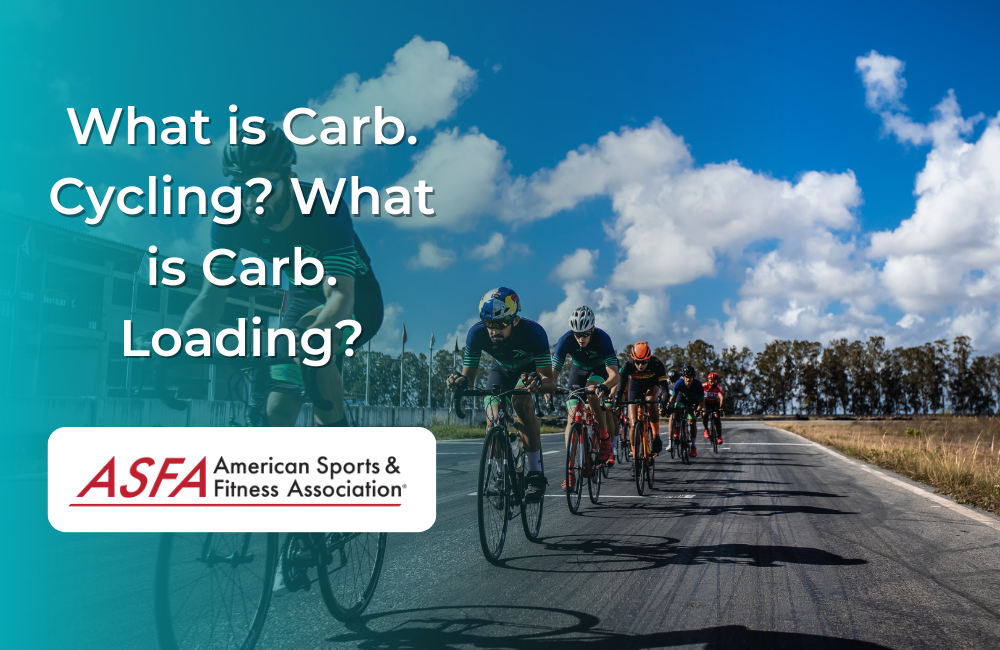Carb cycling is a dietary strategy that involves manipulating your carb intake and timing to achieve certain goals. It can be used for weight loss, maintenance, and performance improvement. Carb loading is similar but only requires you to follow a low-carb diet for several days leading up to an event (like a race).
Understanding Carb Cycling and Carb Loading
Carb cycling and carb loading are related. Carb cycling is a long-term strategy for weight loss, maintenance, and performance improvement. Carb loading refers to a short-term tactic similar to the strategy of carbo-loading before races or intense workouts.
Carb cycling can be effective for losing weight because it allows you to eat higher amounts of carbohydrates on some days than you might normally eat in order to replenish glycogen stores after an intense workout or race. However, you should consider the long-term implications of carb cycling before trying it for weight loss purposes; some experts believe that eating high levels of carbohydrates may lead to insulin resistance or other health problems over time (1).
Carb cycling and carb loading are two related strategies that involve manipulating your carb intake and timing to achieve certain goals. Carb cycling involves manipulating your carbohydrate intake (the type of food you eat that has carbohydrates) in order to lose weight or maintain a healthy body weight, improve performance during workouts, or both. Carb loading is a short-term tactic similar to the strategy of carbo-loading before races or intense workouts.
Carb cycling is a long-term strategy for weight loss, maintenance, and performance improvement. It involves manipulating your carb intake and timing to achieve certain goals. Carb cycling requires planning and can be complicated to understand and implement effectively.
Carb cycling is not a diet, but rather a strategy to help you achieve your goals. It’s also not a healthy way to lose weight in the long term.
Planning and Understanding Nutritional Science
Carb cycling requires planning and can be complicated to understand and implement effectively.
- You need to plan your meals and snacks. You'll want to know what foods are high in carbs, how many grams of carbohydrates you can eat per day, and how many grams you should eat at each meal or snack. Carbohydrate counting can help you figure out these numbers.
- Carb cycling requires familiarity with the basics of nutrition science so that you understand which foods have more or less carbs than others (e.g., carrots vs steak).
Carb cycling is a long-term strategy for weight loss, maintenance, and performance improvement. Carb loading refers to a short-term tactic similar to the strategy of carbo-loading before races or intense workouts. Carb cycling can be effective for losing weight because it allows you to eat higher amounts of carbohydrates on some days than you might normally eat in order to replenish glycogen stores after an intense workout or race.
Carbohydrate loading is a short-term tactic similar to the strategy of carbo-loading before races or intense workouts. Carbohydrates are the body's preferred source of energy and are stored in muscle and liver as glycogen. When you exercise, your body uses this glycogen as fuel, but if you don't replenish it after an extended period of exercise, your performance may suffer during subsequent workouts.
Carbohydrates are also used for energy during high intensity exercise (such as sprinting) or long duration exercise (such as marathon running). Carbohydrate loading can help athletes perform better at these types of events by giving them more energy stores so they don't run out halfway through their event like someone who hasn't eaten enough carbs during training!
Carb cycling is a nutrition protocol that involves manipulating your carbohydrate intake to achieve certain goals. The goal of carb cycling is to control insulin levels and help you lose or gain weight, improve body composition (i.e., muscle-to-fat ratio), and increase performance in the gym.
When you're on a low-carb diet, fat becomes your body's primary source of fuel. The reason for this is that your body prefers to use fat as energy--it's more efficient and doesn't require any extra steps to convert into usable form. Your liver can also make ketones from fatty acids that are used by the brain as an alternative fuel source when glucose isn't available in sufficient amounts.
Metabolic Flexibility and Performance Enhancement
Because of this preference for using fat as fuel, when we restrict our carb intake (or "go low-carb"), our bodies will burn through our stored glycogen stores and start metabolizing our own muscle tissue instead--and if those two sources aren't enough to keep us going throughout the day (and night), then we might start breaking down adipose tissue as well! That's why it's important not only that we eat enough protein but also get plenty of sleep every night while following a low-carb diet plan: so we don't end up losing too much weight or muscle mass before our next meal comes along...
Carb cycling is a long-term strategy, so you should consider the long-term implications of carb cycling before trying it for weight loss purposes, especially if you want to maintain your lean muscle mass.
Carb cycling requires planning and understanding of your body's needs. You need to be aware of when you are in a caloric deficit or surplus based on your calorie intake and activity level during the week. Carb cycling can be complicated to understand and implement effectively because one diet doesn't work for everyone.
Conclusion
Carb cycling is a long-term strategy for weight loss, maintenance, and performance improvement. It requires planning and can be complicated to understand and implement effectively. You should consider the long-term implications of carb cycling before trying it for weight loss purposes, especially if you want to maintain your lean muscle mass.





